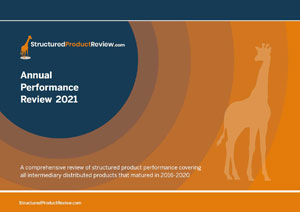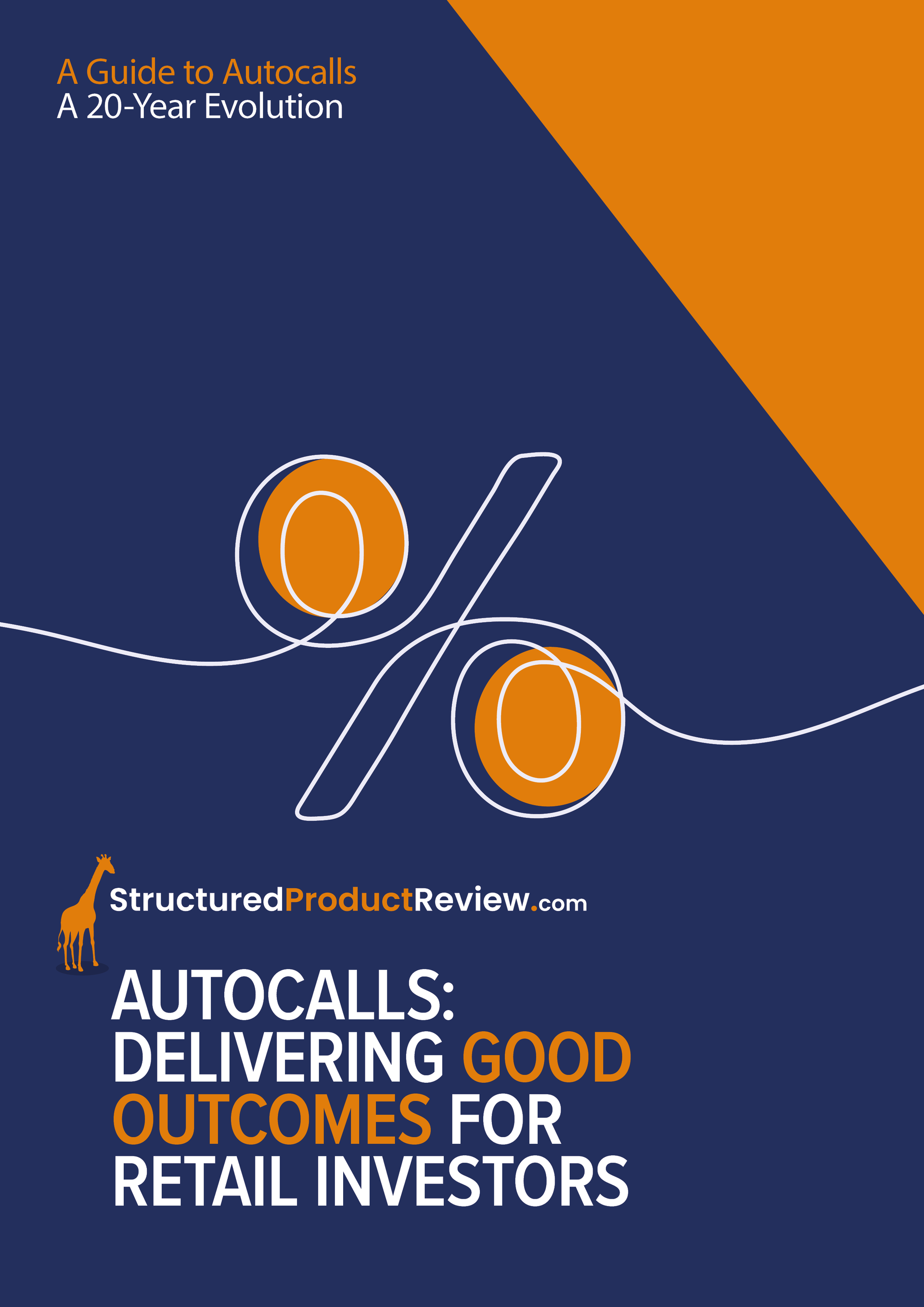01/05/2024
The consequence of the failure of a counterparty of the stature of those behind UK retail structured products, most of which are Globally Systemically Important Banks (G-SIBs), would be very significant and would impact more than holders of structured notes with that institution.
Whilst the likelihood of a counterparty failure may be very low, it is an ever-present risk which, unlike the Lehman’s collapse, could manifest without advance warning. Whilst we should always be clear that a counterparty failure could result in a total loss, the reality is that, beyond the complete collapse of the financial system there would be some prospect of partial recovery. This could however take some considerable time. For Lehman’s backed FTSE 100 only linked, capital-at-risk autocalls the wind down of the Lehman’s estate saw investors ultimately recover between 76.5% and 97.48% of invested capital. This however took 11 years, with only around 27% being recovered before the end of the original maximum term of the plans.
If every client had substantial sums to invest then, provided there are enough structured product counterparties maintaining counterparty diversification would not be too difficult. Diversification is however, somewhat of a double-edged sword. In the event of a failure of a single counterparty, a widely diversified portfolio would no doubt have some exposure, however the impact on the investor would not be catastrophic. Whilst there are therefore “quality over quantity arguments” it is a commonly held and largely accepted view that, in an ideal world you would expose no more than 10% to 15% of investible assets to a single counterparty.
Of course, every client does not have significant sums so very broad diversification is not always possible. But how much exposure is too much? Obviously, any amount exposed to a failed counterparty would, with the benefit of hindsight be too much but whilst we need to acknowledge the risks and always seek to avoid foreseeable harm, where broader diversification is not feasible, more than 15% exposure may be tolerable. With typical minimum transaction sizes of £10k this is often unavoidable where structured products are included in the portfolio and this should not be a reason to exclude them provided the client understands the risks, have sufficient capacity for loss and the counterparty is considered to be a strong institution.
By reference to the credit ratings from the three main agencies, looking at two current market participants, both HSBC and Credit Agricole have a stable outlook but Credit Agricole is perceived to be slightly stronger than HSBC, albeit only by Moody’s:
Standard & Poors Fitch Moody
HSBC A+ AA- A1
Credit Agricole A+ AA- AA3
HSBC is a more globally systemically important bank than Credit Agricole according to The Financial Stability Board, falling into ‘Bucket 3’ alongside Citigroup and Bank of America vs ‘Bucket 1’ for Credit Agricole alongside the likes of Morgan Stanley, Santander, Société Générale and Royal Bank of Canada. ‘Bucket 2’ currently includes Barclays, Goldman Sachs and BNP Paribas.
We are hopefully never going to face a situation where a structured product counterparty fails but we are likely to face a situation where our advice is questioned and as such, it is especially important to document discussions about individual counterparty risk, particularly where the exposure exceeds 10% of investible assets.
Structured investments put capital at risk.
Also in this section
- 2,000 and counting
- Q2 2024 maturity results
- 20 years of autocall maturities
- Product focus - June 2024
- Fixed income or interest?
- Maturities of the month - May 2024
- The barrier debate - revisited
- Product focus - April 2024
- Maturities of the month - April 2024
- Time to call
- I don't believe markets are ever too high for Structured products!
- Notes on counterparty exposure
- Return of Nikkei
- Q1 2024 issuance
- Q1 2024 maturity results
- Structured Products – AAAAAGH!
- Hop in CIBC
- Re-enter Santander
- How to build a financial fortune - revisited
- Issuance in 2023
- Where's the risk?
- Questionable offerings
- Challenging the case against structured products - 'Loss of dividends'
- Navigating the investment landscape
- Challenging the case against structured products - Counterparty risk
- 6-year autocalls approaching final destination
- 1,750 FTSE capital at risk autocall maturities
- The leopard that changed her spots
- Q3 2023
- Challenging the case against structured products - Keydata
- Dilemmas for UK IFA's and the unique role of Structured Products
- 'High charges'
- Precipice bonds
- Intro
- FTSE 100 Contingent Income
- Indexing the indices
- Something different
- Investing through volatility
- 100 10:10s
- The best or worst?
- The 10%/25% 'Rule' that never was
- Structured products and the yield curve
- Fixed income: Capital at risk?
- Prospects for UK inflation - and fun with A.I!
- The Barrier Debate
- More Deposits for now
- Last of the Americans
- What if?
- Time heals all wounds, we hope...
- How to diversify portfolios using structured products?
- The Proof Is In The Pudding...
- Debunking Structured Misconceptions
- 1,500 FTSE Capital-at-Risk Autocall Maturities
- Q3 2022 Maturity Results
- What do we prefer?
- Deposits vs Capital ‘Protected’
- There’s time yet…
- Where did you invest your clients?
- A Six-Month Reflection
- Return of the Rev Con
- Happy 2nd Birthday FTSE CSDI
- Q2 2022 Maturity Results
- The best and worst yet still the best
- Critique my Suitability - Mariana 10:10 Plan June 2022 (Option 2)
- 10/10 for 55 10:10’s
- Q1 2022 Maturity Results
- 'How to build a financial fortune': a follow up
- Critique my Suitability - Mariana 10:10 Plan April 2022 (Option 2)
- 2021 Capital-at-Risk Autocall Maturity Review
- An unwelcome return...
- CSDI's First Birthday
- Bon Anniversaire
- Introducing the FTSE Custom 100 Synthetic 3.5% Fixed Dividend Index
- Q3 2021 Maturity Results
- Critique my Suitability - Mariana 10:10 Plan October 2021 (Option 2)
- Blurring the lines...
- Beware of false knowledge; it is more dangerous than ignorance
- Good news, bad news...
- Certainty is Certainly a Benefit
- Critique my Suitability - Mariana 10:10 Plan September 2021 (Option 2)
- A Twenty-Year Progression
- Q2 2021 Maturity Results
- Nine 8:8s Post Positive Returns in Falling Markets
- Critique my Suitability
- Q1 2021 Maturity Results
- Morgan Stanley’s Marvelous Maturity Medley
Current Products
We review the UK's retail structured investment sector, providing pertinent support for Professional Advisers and relevant research tools.
View all ⟶


